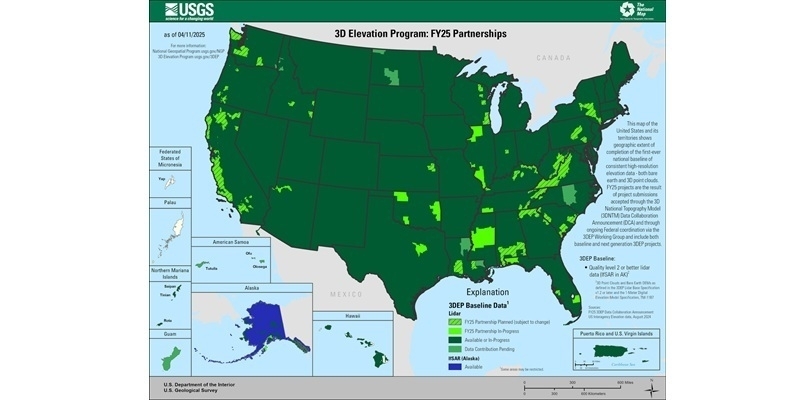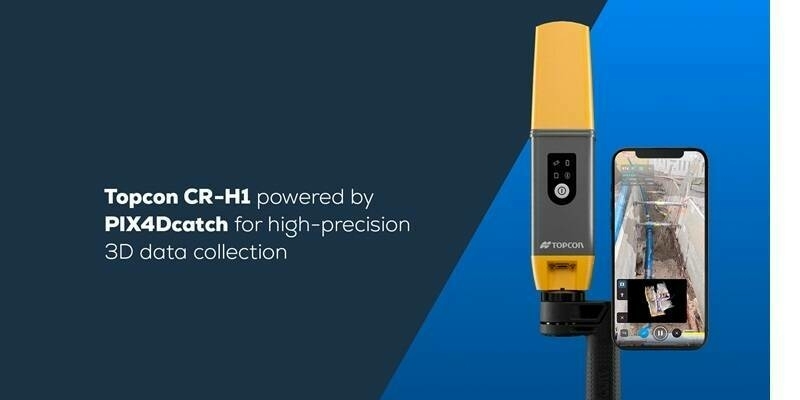The European Union’s Data-Driven Bioeconomy (DataBio) project has announced the launch of 26 different pilot trials, which are already underway in 17 countries. They will provide “real world” insights relevant for policymakers and producers – the farmers, foresters and fishermen engaged in Europe’s bioeconomy.
DataBio is using Big Data technologies to support the growth of Europe’s bioeconomy. More specifically, the project is handling massive flows of data collected through sensors placed in the soil and air, as well as from aerial and satellite imagery.
The DataBio consortium includes 48 partners from 17 countries and over 100 associated organisations.
The project’s mission is driven by the development, use and evaluation of the 26 new pilots covering agriculture (13), forestry (7) and fishery (6). The aim is to contribute to the production of the best possible raw materials from the three sectors to improve the output of food, energy and biomaterials.
The project is deploying over 90 state-of-the-art Big Data, Earth Observation and ICT technologies, linked together through the DataBio Platform. DataBio modelled the pilots and the technologies from a number of perspectives (e.g. technical and data, business motivation and processes, strategic) and developed the first version of the DataBio platform. The technologies have been matched and combined with each other to form innovative complex solutions for each pilot.
Now that the pilots have started their first trials, the project is one step closer to achieving its goal to demonstrate how these solutions can offer real added value to bioeconomy businesses.
The DataBio project coordinator, from INTRASOFT International, Dr Athanasios Poulakidas, said: “We are very excited, anticipating tangible success stories showing there is real value for all in using Big Data technologies in bioeconomy.”
Agriculture pilots
Precision agriculture in olives, fruits, grapes (Greece): A smart farming pilot to promote sustainable practices by providing policy advice on irrigation, fertilisation and pest/disease management. The exploitation of heterogeneous data, facts and scientific knowledge is aimed to facilitate decision-making and ensure smooth implementation of policy advice in the field. Deployed at three different sites in Greece, the pilots target olives, peaches and grapes.
Precision agriculture in vegetable seed crops (Italy): Harvesting plants at the right stage of maturity is vital to ensure the seed produced is of high quality. Currently, it is up to farmers, with the help of seed experts, to decide about harvesting and this is usually based on experience and observation. The scope of the pilot is to support farmers with the use of satellite telemetry.
Precision agriculture in vegetables seed crops (Netherlands): Potato growers aim to furnish them with higher and more predictable yields in a sustainable manner. Farmers will use a crop monitoring and benchmarking system using satellite data that provides information on the crop status based on weather data and greenness index data.
Big Data management in greenhouse eco-systems (Italy): This pilot implements genomic selection models, with particular focus on tomatoes, to support the greenhouse horticulture value chain.
Cereals, biomass and fibre crops (Spain): Using Earth Observation imageries and Internet of Things (IoT) sensor data, the pilot will map different areas in Spain and set up an informative management system for irrigation and early warning of heterogeneities or malfunctions of irrigation systems. The users of this service will be farmers, irrigation communities and public administrations.
Cereals, biomass and fibre crops (Greece): A smart farming pilot to promote sustainable practices by providing policy advice on irrigation. The exploitation of heterogeneous data, facts and scientific knowledge is aimed to facilitate decision-making and ensure smooth implementation of policy advice in the field. The target crop type is cotton.
Cereals, biomass and fibre crops (Italy): The pilot uses remote and proximal sensors for biomass crop prediction and management. The biomass crops include sorghum, fiber hemp and cardoon that can be used for several purposes including biofuel, fiber, and biochemicals respectively.
Cereals, biomass and fibre crops (Czech Republic): To develop the web-based webGIS platform for mapping crop vigour, this pilot integrates Earth Observation data as a support tool for variable rate application of fertilisers and crop protection. This includes identification of crop status, mapping of spatial variability and delineation of management zones.
Machinery management (Czech Republic): This pilot is focused mainly on collecting telematic data from tractors and other farm machinery to analyse and compare to other farm data. The main goal is to collect and integrate data and receive comparable results. A challenge associated with this pilot is that a farm may have tractors and other machinery from manufacturers that use different telematic solutions and data ownership/sharing policies.
Insurance (Greece): To promote a damage assessment methodology and services dedicated to the agricultural insurance market, this pilot will eliminate the need for on-the-spot checks and to speed up the claims pay-out process. It uses data from Earth Observation platforms and Internet of Things agro-climate sensors to assess the impact of climate-related systemic perils (e.g. high/low temperatures, flood, drought) on high-value crops.
Farm Weather Insurance Assessment (Italy): The aim of this pilot is to provide and assess a test area of services for the agriculture insurance market, in particular risk assessment related to weather conditions and damage assessment. It is based on the analysis of satellite data, which is correlated with meteorological data and other ground-available data.
Common Agricultural Policy (CAP) Support (Italy and Romania): The objective of this pilot is to support the CAP by utilising Earth Observation data to identify the crop types in farm areas. Products and services will be fine-tuned to achieve requirements set out in the 2015-2020 EU CAP policy. The pilot will provide information layers and indicators to support European Paying Agencies with different levels of aggregation and details up to farm level.
Common Agricultural Policy (CAP) Support (Greece): This pilot evaluates a set of Earth Observation-based crop classification services, which deal effectively with the newly introduced CAP demands for systematic multi-crop agricultural monitoring, tracking and assessment of eligibility conditions. The proposed services use “traffic lights” colour-coding to protect the farmers against errors during the submission of greening applications.
Forestry pilots
Easy data sharing and networking (Finland): The Wuudis platform is used to interface with Finland’s forest authority. New networking features have been added, such as a work quality monitoring app. This will streamline and ensure transparency of subsidy payments, saving enormous amounts of time.
Monitoring and control tools for forest owners (Finland): This pilot adds crowdsourcing services to the Wuudis platform, interfacing with Finland’s forest service portal. This aims to better monitor forest damage (such as storms, snow, pests, diseases).
Forest damage remote sensing (Finland): This pilot aims to create a forest inventory monitoring service by using data collected by Unmanned Aerial Vehicles (UAVs) on Wuudis.
Monitoring of forest health (Spain): Using satellite data, Unmanned Aerial Vehicles (UAV) imagery and field data, this pilot is developing a methodology for the early detection and monitoring of plagues and diseases affecting forests. The study cases are Gonipterus affecting Eucalyptus and Phytophtora affecting Quercys Illex. The final product will be used by public administrations for optimal decision-making.
Invasive alien species control and monitoring (Spain): Using Big Data sources such as trading and travelling datasets, in addition to weather and climate information, this pilot is developing a methodology for the creation of Alien Invasive Species risk maps. The indexes obtained are related to the susceptibility of ecosystems to be invaded. The final product will be used by public administrations.
Web-mapping service for government decision-making (Czech Republic): Big satellite data are processed in novel ways to yield forest health trends. To do so, all available satellite observations are used, validated against extensive in-situ database of forest health. Resulting forest health maps are published as a web-mapping service and used by the Ministry of Agriculture for subsidy payments.
Shared multiuser forest data environment (Finland): Finland’s forestry service portal will be extended to offer more forest data services, including using crowdsourced ones and connectivity with the national service architecture. It will encourage the utilisation of standardised and open forest data for developing new services that will benefit the entire forestry sector.
Fishery pilots
Oceanic tuna fisheries immediate operational choices: The goal of this pilot is to improve vessel energy efficiency in oceanic tuna fisheries and engine preventive maintenance by providing support tools for operational choices, such as vessel loading, weather routing and condition-based maintenance, for Basque fishery vessels. Big Data approaches will build models using engine, propulsion, meteorological and historical data and the vessels design.
Small pelagic fisheries immediate operational choices: This pilot focuses on energy optimisation in Norwegian pelagic fisheries through operational support tools for deciding propulsion mode (diesel-electric, diesel-mechanic and various hybrid configurations) and power generation (use of shaft generator and auxiliary engines). The expected outcome is an on-board application that displays in real-time, current fuel consumption and the best alternatives for propulsion modes and energy production.
Oceanic tuna fisheries planning: The aim of this pilot is to use data from Earth Observation satellites and from buoys used by fishermen, to produce real-time fisheries route planning. This will also allow for eco-friendlier fisheries by means of consuming less fuel for fishing in a sustainable manner.
Small pelagic fisheries planning: This pilot aims to demonstrate how the use of Big Data technologies can provide crew and shipowners with information in a manner that benefits fisheries planning, for example for finding the best suitable fishing grounds. This pilot targets Norway’s small pelagic fisheries.
Pelagic fish stock assessments: The pilot aims to show that a combination of information from various data assets may help produce better fish population estimates for pelagic fish stocks in the Norwegian fishing zones. It is anticipated that a crowdsourced data collection effort combined with public/private data assets and data analytics can increase both the accuracy and precision of stock assessments.
Small pelagic market predictions and traceability: This pilot will leverage Big Data technologies for pelagic price prediction based on various market data relevant for pelagic fisheries, such as catch and landing data and International fisheries export and market data. Near-future pelagic price predictions will be used for catch value optimisation.
Subscribe to our newsletter
Stay updated on the latest technology, innovation product arrivals and exciting offers to your inbox.
Newsletter

